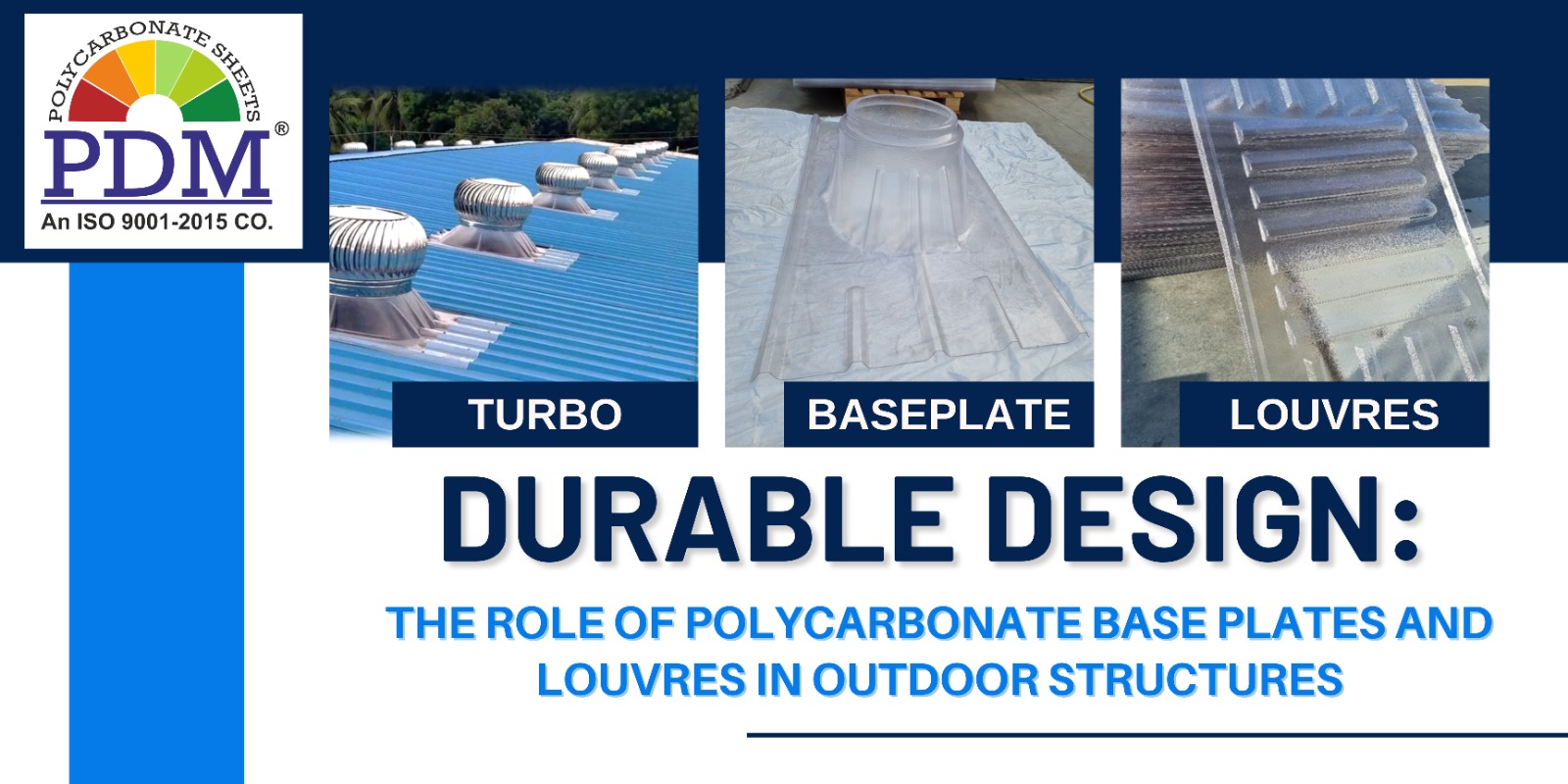In the realm of outdoor architecture and construction, durability is paramount. Structures exposed to the elements must withstand a myriad of challenges, including extreme weather conditions, UV radiation, and physical impacts. Among the key components contributing to the resilience of outdoor structures are Polycarbonate Baseplates and Louvres. These versatile elements play a vital role in ensuring the longevity, functionality, and aesthetic appeal of outdoor installations. Let’s delve into their significance and the benefits they bring to outdoor design.
The Importance of Polycarbonate Baseplates
Polycarbonate base plates serve as the foundation for outdoor structures, providing stability and support while protecting the underlying surfaces. Whether used in awnings, canopies, or pergolas, these plates offer several key advantages:
- Weather Resistance: Polycarbonate base plates are engineered to withstand harsh weather conditions, including rain, snow, hail, and high winds. Their durable construction ensures they remain intact and stable, even in the most challenging environments.
- UV Protection: Exposure to ultraviolet (UV) radiation can cause materials to degrade and deteriorate over time. Polycarbonate base plates are UV-resistant, offering long-term protection against yellowing, discoloration, and loss of structural integrity.
- Easy Installation: Designed for hassle-free installation, polycarbonate base plates streamline the construction process, saving time and labour costs. Their lightweight nature and compatibility with various mounting systems make them suitable for a wide range of outdoor applications.
Enhancing Ventilation and Aesthetics with Polycarbonate Louvres
Louvres are an essential component of outdoor structures, providing ventilation, shade, and architectural flair. Made from durable polycarbonate material, louvres offer numerous benefits:
- Air Circulation: Louvres promote natural airflow, helping to regulate temperature and humidity levels within outdoor spaces. This ventilation not only enhances comfort but also reduces the reliance on mechanical cooling systems, contributing to energy efficiency.
- Sun Protection: By diffusing sunlight and casting shadows, polycarbonate louvres create shaded areas that protect against excessive heat and glare. This sun protection enhances the usability of outdoor spaces, allowing individuals to enjoy alfresco dining, gatherings, or relaxation in comfort.
- Design Versatility: Polycarbonate louvres come in various shapes, sizes, and configurations, allowing architects and designers to customize outdoor structures to suit their aesthetic preferences and functional requirements. Whether used as standalone features or integrated into larger architectural designs, louvres add visual interest and sophistication to outdoor environments.
Conclusion
Polycarbonate Baseplates and Louvres are indispensable elements in the design and construction of durable outdoor structures. From providing stability and weather resistance to enhancing ventilation and aesthetics, these components play a crucial role in ensuring the longevity and functionality of outdoor installations. Embrace the durability and versatility of Polycarbonate Baseplates and Louvres in your next outdoor project, and elevate your design to new heights of excellence and resilience.



